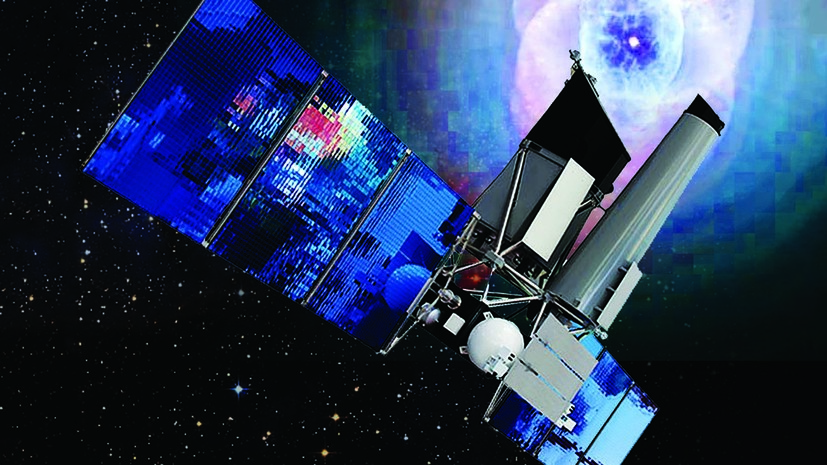The Russian Astrophysical Observatory Spektr-RG entered a given orbit, 1.5 million km away from the Earth. This was told in an interview with RT by an astrophysicist, deputy director of the Space Research Institute of the RAS Alexander Lutovinov.
The device was designed in NPO them. Lavochkina. Two x-ray telescopes are installed on it: the ART-XC created in Russia and the German eRosita. They will have to take high-resolution images of the sky, with which scientists will then draw up the most accurate map of the universe.
Spectrum-RG was launched into space from Baikonur by the Proton-M launch vehicle on July 13, 2019. Three months later, on October 21, he entered the calculated working orbit with a radius of about 800 thousand km. At the moment, Russian scientists continue to carry out adjustment work and test observations, which were started almost immediately after the launch of the observatory.
As noted by Lutovinov, for three months in space the device studied about 2% of the starry sky.
“October 21 this year, specialists of the NGO named after Lavochkina conducted the next course correction of the apparatus and formed its final working orbit with a radius of about 800 thousand km near the Lagrange point L2 of the Sun-Earth system. The device began to receive the first data even earlier: at the end of July, the Russian ART-XC X-ray telescope turned on, and at the end of August, the German eRosita. So all these three months the observatory worked, we studied about 2% of the entire sky, ”he said.
The scientist noted that the studies carried out within the framework of calibration and test works cannot yet be called a full-fledged review, however, each of these observations is of great scientific interest.
“We conducted a series of point observations. Using the Russian ART-XC X-ray telescope, a deep review of the galactic center was made, which we are now carefully analyzing. We also conducted special mini-reviews of parts of the galactic plane and extragalactic field. It was important for us to understand how deeply we can watch when there is no “flare” from nearby bright objects, ”said the astrophysicist.
In late November - early December, the observatory will begin a circular rotation and begin a full review of the universe. Every day, shifting somewhat, she will scan a small strip of sky one degree wide. The device will go through a full cycle for six months. In total, with his help, scientists intend to get eight complete maps of the sky.
In addition, researchers will conduct a census of clusters of galaxies and black holes, as well as try to solve the mystery of dark energy. The mission is planned to be completed in 2025.

